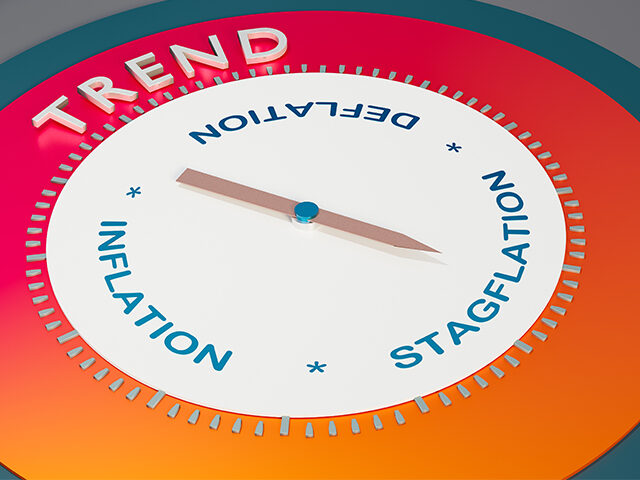We got more evidence on Tuesday that we are headed for at least a bout of recessionary stagflation.
Stagflation is defined as growth below trend combined with inflation above trend, although perhaps not an outright economic contraction. What we call recessionary stagflation is a significant decline in real growth—a recession, in other words—combined with inflation.
The Richmond Federal Reserve’s Fifth District Survey of Manufacturing Activity could have come with recessionary stagflation sirens blaring from its pages. The measure of new orders fell even deeper into negative territory, where it has been every month since May. The October reading of 2022 was the lowest since May of 2020, when it stood at -36 in the immediate aftermath of the initial pandemic lockdowns. In fact, in 2020, the volume of new orders fell for only two months, meaning we’re now in a much more prolonged demand slump for manufactured goods in the mid-Atlantic region than during the darkest days of the pandemic.
Also, the expectations metric for new orders turned negative for the first time since June and May of 2022. Which is to say, businesses have reported not only that they have suffered several months of declining orders but also that they expect orders t0 fall even farther. The shipments gauge and the expectations for shipments also went negative in October.
If inflation is considered evidence of an economy that is overheating, the kind of dramatic slowdown seen in the Richmond Fed report could be expected to be accompanied by a slowdown in inflation. Instead, the inflation measures showed further acceleration. The prices paid for raw materials and components surged to its third highest level this year, only behind May and June. The prices received measure also jumped. Perhaps even worse, the forecasts showed rising expectations on both prices paid and prices received.
In other words, manufacturing in the Fifth District is showing a decline in business activity and an increase in inflation.
If this were an isolated report, it could be waived off as perhaps due to regional or idiosyncratic developments. Unfortunately, it is not an isolated report. The New York Fed’s Empire State survey also showed that manufacturing contracted while inflation heated up. The prices paid index jumped much higher, and the prices received was unchanged. The Philly Fed’s survey showed new orders remaining deep into contraction while both prices paid and prices received index rose, indicating a faster pace of inflation.
In other words, October saw manufacturing recessionary stagflation stretching from Lake Placid, New York, to Hilton Head, South Carolina. What this suggests is that demand and output is likely to cool faster than prices. That will create a very awkward position for the Federal Reserve because it suggests the central bank may face the need for more hikes even as the economy seriously contracts. It will put to the test the determination of Fed officials to keep the stance of monetary policy restrictive while the economy deteriorates and evidence of the policies’ effectiveness against inflation is scarce.

COMMENTS
Please let us know if you're having issues with commenting.